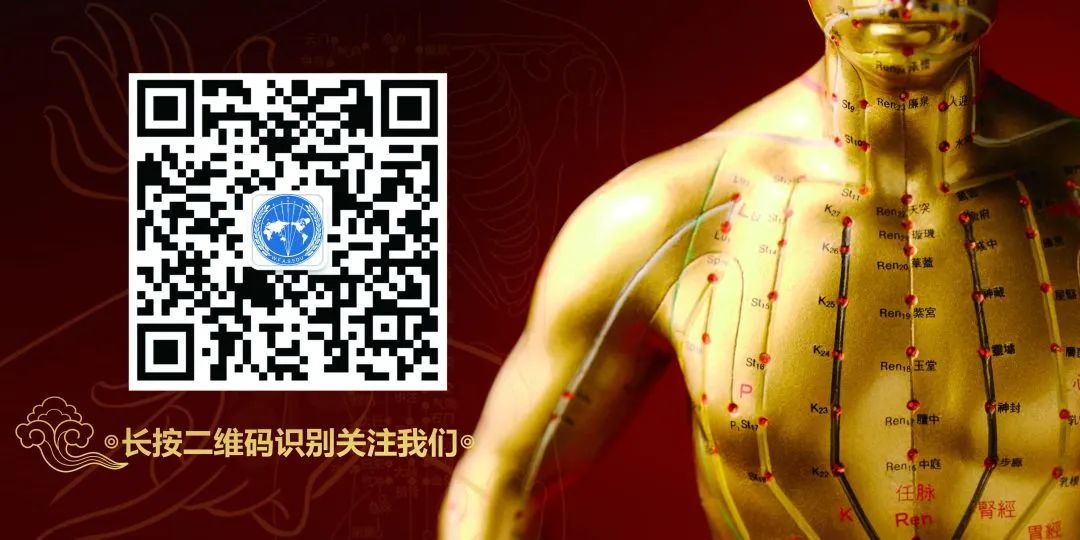Shu Di Huang (Rehmannia Glutinosa) is the product of the steamed tubers of the plants Di Huang or Huai Di Huang from the Scrophulariaceae family. It has a sweet taste, a slightly warm nature, and is associated with the Liver and Kidney meridians. It is known for its effects of nourishing blood, enriching yin, benefiting essence, and calming the spirit. This herb is regarded as a sacred medicine for nourishing blood and yin, and its usage has flourished since the Song Dynasty, quickly becoming a key herb in TCM for replenishing yin, blood, essence, and fluids.
Nourishing Blood
This herb has a sweet taste and a moist quality, primarily entering the Liver and Kidney meridians. The Liver stores blood, and the Kidneys store essence; both essence and blood share a common source and belong to the yin category. This herb can both nourish blood and benefit essence, and it has been recognized by physicians throughout history as a crucial herb for blood nourishment, as noted in the “Ben Cao Bei Yao” which states it is “the superior agent for nourishing blood.”
The Heart governs blood, the Liver stores blood, the Spleen regulates blood, and the Kidney essence can also transform into blood. If the functions of these four organs are disordered, blood deficiency may fail to nourish, leading to symptoms such as a pale tongue, a white or sallow complexion, pale lips and eyelids, dizziness, and blurred vision. In such cases, this herb can be combined with Dang Gui (Angelica Sinensis) to nourish blood and generate new blood, as seen in the “Pu Ji Ben Shi Fang”‘s Nei Bu Wan. Alternatively, adding Bai Shao (Paeonia Lactiflora) and Chuan Xiong (Ligusticum Chuanxiong) can enhance the blood-nourishing and blood-activating effects, as in the “Tai Ping Hui Min He Ji Ju Fang”‘s Si Wu Tang, which is praised as a formula that addresses “all blood-related diseases.” If blood deficiency fails to nourish the eyes, causing pain in the eyeballs, inability to see, light sensitivity, and soreness, this herb can be used with Dang Gui, Bai Shao, Tian Dong (Asparagus Cochinchinensis), Chuan Xiong, Niu Xi (Achyranthes Bidentata), Bai Zhu (Atractylodes Macrocephala), and Fang Feng (Saposhnikovia Divaricata), as in the “Shen Shi Yao Han”‘s Xiong Gui Bu Xue Tang. If blood deficiency leads to muscle atrophy and numbness in the limbs, this herb can be combined with Dang Gui, Bai Shao, Mu Guo (Chaenomeles Sinensis), Zhi Gan Cao (Glycyrrhiza Uralensis), Chuan Xiong, and Suan Zao Ren (Ziziphus Spinosa), as in the “Yi Zong Jin Jian”‘s Bu Gan Tang.
This herb not only has excellent nourishing effects for blood deficiency but also works well for both qi and blood deficiency. For instance, in the “Jing Yue Quan Shu”‘s Liang Yi Gao, this herb is paired with Ren Shen (Ginseng) to treat symptoms of fatigue, dizziness, pallor, a pale tongue, and a thin pulse. Alternatively, using the ingredients of Liang Yi Gao as a base, it can be combined with Huang Qi (Astragalus Membranaceus), Dang Gui, Bai Shao, and Bai Zhu to treat qi and blood deficiency, as in the “Tai Ping Hui Min He Ji Ju Fang”‘s Shuang He Tang. Furthermore, formulas like Ba Zhen Tang and Shi Quan Da Bu Tang, which nourish qi and blood, prominently feature this herb as a key ingredient.
The blood-nourishing effects of Shu Di Huang are particularly common in gynecological conditions, such as qi and blood deficiency, blood sea emptiness, and the failure of Chong and Ren to nourish, leading to late menstruation or scanty, pale menstrual flow, or even premature menopause. This herb can be used with Ren Shen and Dang Gui, as in the “Jing Yue Quan Shu”‘s Da Bu Yuan Jian or the “Zheng Zhi Zhun Sheng”‘s Zi Xue Tang. If qi fails to contain blood, leading to irregular menstruation and continuous bleeding, this herb can be combined with Huang Qi, Ren Shen, and Bai Zhu, as in the “Fu Qing Zhu Nu Ke”‘s Gu Ben Zhi Beng Tang.
Enriching Yin
This herb is moist and excels at nourishing the yin of the Liver and Kidneys, particularly the Kidney yin. Kidney yin is the foundation of the body’s yin fluids; when Kidney yin reaches the five organs, it transforms into the yin of those organs. If Kidney yin is deficient, the yin fluids of the five organs will also be depleted. Zhang Jing Yue, known as “Zhang Shu Di,” had a profound understanding of the yin-nourishing effects of Shu Di Huang. In his “Ben Cao Zheng,” he stated: “For any organ with yin and blood deficiency, Shu Di is indispensable.” He also noted: “If yin is deficient and the spirit scatters, it is not enough to rely on Shu Di to gather it; if yin is deficient and fire rises, it is not enough to rely on Shu Di to descend it; if yin is deficient and there is agitation, it is not enough to rely on Shu Di to calm it; if yin is deficient and there is rigidity, it is not enough to rely on Shu Di to soften it; if yin is deficient and water evil overflows, without Shu Di, how can one control it; if yin is deficient and true qi is lost, without Shu Di, how can one return to the source; if yin is deficient and both essence and blood are damaged, with thin fats, without Shu Di, how can one nourish the stomach and intestines?” This passage comprehensively discusses the medicinal effects of Shu Di Huang in nourishing yin and treating diseases. Shu Di Huang not only has excellent nourishing effects for insufficient liver and kidney yin but is also the most suitable treatment for various diseases characterized by liver and kidney yin deficiency. It is essential for treating conditions such as yin deficiency with internal heat, yin deficiency with yang hyperactivity, yin deficiency with excessive fire, and the disharmony between the heart and kidneys.
In cases of yin deficiency with internal heat, where liver and kidney yin fluids are depleted, and yin and yang are imbalanced, leading to symptoms such as lower back pain, knee weakness, dizziness, tinnitus, bone steaming heat, palm and sole heat, night sweats, thirst, and nocturnal emissions, this herb can be combined with Shan Yao (Dioscorea Opposita), Dan Pi (Moutan Cortex), Fu Ling (Poria), and Shan Yao to nourish the Liver and Kidneys, as in the “Xiao Er Yao Zheng Zhi Jue”‘s Liu Wei Di Huang Wan. If there is significant empty fire, it can be combined with Zhi Mu (Anemarrhena Asphodeloides) and Huang Bai (Phellodendron Amurense), as in the “Yi Zong Jin Jian”‘s Zhi Bai Di Huang Wan and the “Dan Xi Xin Fa”‘s Da Bu Yin Wan.
In cases of yin deficiency with yang hyperactivity, where liver and kidney yin are deficient, and liver yang is hyperactive, symptoms may include headaches, dizziness, a feeling of emptiness in the head, lower back and knee weakness, and tinnitus. This herb can be combined with Shan Yao, Shan Yao, Gou Qi Zi (Lycium Barbarum), Ju Hua (Chrysanthemum), and Shi Jue Ming (Haliotis) to nourish yin and subdue yang, as in the “Jing Yue Quan Shu”‘s Da Bu Yuan Jian and the “Ma Zheng Quan Shu”‘s Qi Ju Di Huang Wan.
In cases of yin deficiency with excessive fire, if the fire disturbs the blood, it can lead to bleeding symptoms. This herb can nourish yin and reduce fire. For instance, if Kidney yin is deficient, leading to internal fire, burning the vessels, resulting in short, red, bloody urine, or symptoms such as epistaxis, gingival bleeding, or skin bleeding, this herb can be used in combination with Zhi Bai Di Huang Wan, adding Han Lian Cao (Eclipta Prostrata), Da Ji (Cirsium Setosum), and Xiao Ji (Cirsium Setosum). The “Wei Sheng Bao Jian” records a formula using this herb combined with Sheng Di (Rehmannia Glutinosa), Gou Qi Zi, Di Gu Pi (Lycium Barbarum), and honey to treat recurrent bleeding. Clinical reports indicate that using this herb combined with Huai Hua (Sophora Japonica), lotus root slices, and Bai Zi Ren (Platycladus Orientalis) to treat hemorrhoidal bleeding due to yin deficiency with excessive fire has shown a total effective rate of 89.3%.
In cases of yin deficiency with disharmony among the five organs, if Kidney yin is deficient, leading to disharmony between the heart and kidneys, resulting in insufficient heart yin, symptoms may include palpitations, insomnia with many dreams, forgetfulness, and night sweats. This herb can be combined with Bai Zi Ren, Tian Dong, and Mai Dong (Ophiopogon Japonicus) to nourish yin, support the heart, and calm the spirit, as in Bai Zi Yang Xin Wan. If Kidney yin is deficient, leading to stomach fire rising, resulting in headaches, loose teeth, or even gingival bleeding, this herb can be combined with Shi Gao (Gypsum), Mai Dong, Zhi Mu, and Niu Xi, as in the “Jing Yue Quan Shu”‘s Yu Nu Jian. If both lung and kidney yin fluids are deficient, leading to internal fire disturbance, resulting in cough with little phlegm, possible blood-streaked phlegm, dry mouth and throat, five hearts heat, and red cheeks with night sweats, this herb can be combined with Xuan Shen (Scrophularia Ningpoensis), Bai He (Lilium), Chuan Bei Mu (Fritillaria Cirrhosa), and Jie Geng (Platycodon Grandiflorum) to nourish yin, moisten the lungs, and clear heat, as in the “Shen Zhai Yi Shu”‘s Bai He Guo Jin Tang. It can also be combined with Mai Dong and Wu Wei Zi (Schisandra Chinensis), as in Mai Wei Di Huang Wan, or with Ban Xia (Pinellia Ternata) and Fu Ling, as in the “Jing Yue Quan Shu”‘s Jin Shui Liu Jun Jian.
In cases of yin deficiency in women, the liver is considered the source of vitality, thus liver blood and kidney yin are particularly important for women. Shu Di Huang can nourish blood and enrich yin, making it a commonly used herb in gynecology. For instance, if Kidney yin is deficient, leading to insufficient essence and blood, resulting in failure of Chong and Ren to nourish, causing scanty menstruation, amenorrhea, or irregular bleeding, this herb can be combined with Shan Yao, Gou Qi Zi, and Shan Yao, as in the “Jing Yue Quan Shu”‘s Gui Shen Wan, Zuo Gui Yin, and You Gui Yin. For treating infertility due to insufficient yin and blood, this herb can be combined with Dang Gui, Bai Shao, and Shan Yao to create the Yang Jing Zong Yu Tang (“Fu Qing Zhu Nu Ke”). Alternatively, it can be used with the “Yi Fang Ji Jie”‘s Er Zhi Wan to nourish yin and blood, regulate Chong, and benefit essence. Modern treatments for various gynecological diseases also utilize this herb, such as using San Huang Hong Re Tang (Shu Di Huang, Hu Huang Lian, Huang Bai, Gui Ban, etc.) to treat menopausal heat symptoms, or combining this herb with Bai Shao, E Jiao (Colla Corii Asini), and Huang Lian to create the Menopausal Tranquil Capsule for treating menopausal syndrome, or combining this herb with Huang Qin, Bai Zhu, and Sang Ji Sheng (Taxillus) to create a formula for treating habitual miscarriage. This illustrates the important role of this herb in treating various gynecological conditions.
Benefiting Essence
Kidney essence is a mixture of congenital and acquired essence, closely related to the body’s growth, development, reproduction, and various physiological activities. This herb excels at benefiting essence and filling the marrow, making it an indispensable medicine for treating Kidney essence deficiency. For instance, if Kidney essence is insufficient, leading to premature aging, hair loss, dryness, or early graying of hair, loose teeth, tinnitus, forgetfulness, and dementia, this herb can be combined with He Shou Wu (Polygonum Multiflorum), Gou Qi Zi, and Gui Ban (Testudo) to nourish Kidney essence and combat aging, as in Shou Wu Wan. For cases of Kidney essence deficiency leading to developmental delays, short stature, soft bones, and sluggish movements, this herb can be combined with Lu Rong (Cervus Nippon Temminck), Wu Jia Pi (Acanthopanax Gracilistylus), and Shan Yao to nourish the Kidney and benefit essence, as in the “Yi Zong Jin Jian”‘s Jia Wei Liu Wei Di Huang Wan. For cases of Kidney essence deficiency leading to premature aging, with men having low sperm count and women having scanty menstruation, the “Jing Yue Quan Shu”‘s Gu Yin Jian can be used, combining this herb with Ren Shen, Wu Wei Zi, and Tu Si Zi (Cuscuta Chinensis) to benefit essence and assist yang, restoring its natural vitality.
Modern pharmacological studies have found that the polysaccharides in Shu Di Huang have excellent antioxidant effects, such as increasing the activity of superoxide dismutase, catalase, and glutathione peroxidase in aging animals’ blood, while reducing the levels of lipid peroxides in plasma, brain, and liver homogenates, thus exhibiting anti-aging effects.
Calming the Spirit
Yin entering into yang leads to sleep; the heart governs blood and houses the spirit, the liver stores blood and houses the soul, and the kidneys govern essence and have the ability to communicate with the heart spirit. Therefore, when yin blood is deficient, and the functions of the three organs are disordered, it can lead to difficulties in falling asleep, vivid dreams, unsatisfactory sleep, early waking, and difficulty returning to sleep. Shu Di Huang nourishes the heart and liver blood, enriches the kidney essence, and can cultivate yin, cover yang, nourish the heart spirit, and calm the soul, thus having a calming and sleep-promoting effect.
Clinical reports indicate that using this herb combined with Huang Lian, Bai Shao, E Jiao, Huang Qin, and Fu Ling to create the Menopausal Tranquil Capsule, with a dosage of 5 capsules three times a day for one month, has shown significant efficacy in treating insomnia. Folk TCM practitioner Ji Ling Hui has treated patients with insomnia lasting over a month using 500 grams of this herb and 6 grams of cinnamon, achieving excellent results. The heavy use of this herb, with less cinnamon, aims to nourish yin blood, harmonize yin and yang, and calm the spirit to aid sleep. After learning from this experience, I have clinically used a reduced dosage of this herb to 150 grams and cinnamon 3-5 grams, achieving remarkable results. For example, I treated a student who was unable to sleep for several nights due to academic pressure as graduation approached. Upon examination, his tongue was red with no coating, indicating heart blood deficiency and lack of nourishment to the spirit. I prescribed 150 grams of this herb and 5 grams of cinnamon, and after taking the medicine for 2 hours, he felt drowsy and slept soundly through the night, recovering after a few days of treatment. It should be noted that this method is particularly effective for those with yin blood deficiency and a red tongue with little coating, while those with phlegm-dampness may experience less efficacy.
Modern pharmacological studies have found that the polysaccharide components in the decoction of this herb have an inhibitory effect on the nervous system, enhancing the hypnotic effects of subthreshold doses of pentobarbital sodium and thiopental sodium.
Lowering Blood Sugar
Diabetes is mostly categorized under the TCM condition of “Xiao Ke” (wasting-thirst), initially characterized by dryness and heat. As the disease progresses, yin deficiency and dryness-heat may coexist, and in chronic cases, yin deficiency predominates. Although there are three types of Xiao Ke, they often coexist, and treatment generally focuses on nourishing Kidney yin, with additional herbs to nourish the yin of the lungs and stomach and clear heat as needed. For instance, this herb can be combined with Shi Hu (Dendrobium), Mai Dong, Bai He, and Sheng Di to enhance its yin-nourishing and thirst-quenching effects; with Zhi Mu, Shi Gao, and Niu Xi to enhance its ability to clear stomach heat; and with Huang Bai, Zhi Mu, and Shan Yao to enhance its yin-nourishing and fire-reducing effects. Reports indicate that using the Er Di Er Dong Yang Yin Tang (Shu Di Huang, Sheng Di Huang, Tian Dong, Mai Dong, etc.) to treat 136 cases of type 2 diabetes, with a daily dosage of 1 dose for 15 days per treatment course, showed a total effective rate of 93.0%, significantly higher than the control group.
Modern pharmacological studies have found that the oligosaccharides and rehmanniosides in Shu Di Huang have a blood sugar-lowering effect in experimental animals.
Preventing Dementia
In recent years, the incidence of vascular dementia and senile dementia has been rising annually, placing a significant burden on patients, families, and society. Both vascular dementia and senile dementia fall under the TCM category of “dementia disease.” Since the kidneys govern the bones and produce marrow, which connects to the brain, this condition often involves pathological factors of Kidney essence deficiency, in addition to blood stasis and phlegm obstruction. Shu Di Huang nourishes the kidneys and fills essence, benefiting the brain, thus playing an important role in the treatment of this condition. According to the experience of Master Zhang Zhi Yuan, one of the three major clinical effects of Shu Di Huang is to regulate brain atrophy and senile dementia, treating symptoms such as dizziness, significant memory loss, confusion, inability to recognize family members, and incoherent speech. This herb can improve the aging state of brain tissue lacking nutrition, often combined with Dang Gui, Shan Yao, Dan Shen (Salvia Miltiorrhiza), Chuan Xiong, Water Beetle, San Qi (Panax Notoginseng), and Saffron for long-term use, yielding observable effects.
Modern pharmacological studies have found that the decoction of Shu Di Huang enhances learning and memory, providing modern medical support for its treatment of dementia.
Shu Di Huang is commonly used in decoctions at a dosage of 10-30 grams, and in pills or powders as appropriate. Due to its heavy and moist nature, excessive or prolonged use may lead to reduced appetite and aversion to food, so it is often combined with herbs that promote qi and digestion, such as Chen Pi (Citrus Reticulata), Sha Ren (Amomum Villosum), and Fo Shou (Citrus Medica). Additionally, those with qi stagnation and phlegm accumulation, or those prone to abdominal distension and loose stools, should use this herb with caution. (Wang Qingguo, Beijing University of Chinese Medicine)
(Note: The formulas and treatment methods mentioned in this article should be used under the guidance of a physician.)
Source: China Traditional Chinese Medicine News
DisclaimerIf reproducing content from this platform, please indicate the source.The images and text from this platform are sourced from the internet; if there are any copyright issues, please contact us, and we will promptly delete the relevant content.The copyright of this article belongs to the original author and source, and the content reflects the author’s views, which do not represent the views of this public account or its responsibility for its authenticity.This public account reserves the final interpretation rights of this disclaimer.
Exciting Content
-
The Amazing Auricular Acupuncture Therapy
-
100 Questions about Moxibustion
-
Winter Diseases Treated in Summer with Moxibustion
-
24 Solar Terms, Meridians, Acupoints, and Health Preservation
-
Half-Hour Introduction to Pediatric Moxibustion
-
Wang Hongcai’s Self-Prevention and Treatment of Diabetes
-
Daoist Five Movements and Six Qi Premium Class
-
[Ancient Method Health Preservation] Tai Chi Anti-Aging Technique
Shi Zhen Education



Key Sections · Click the title to enter
Instructor Introduction Training Highlights Course Registration
Health Mall Online Classroom
For online learning courses, please click Read the original text

